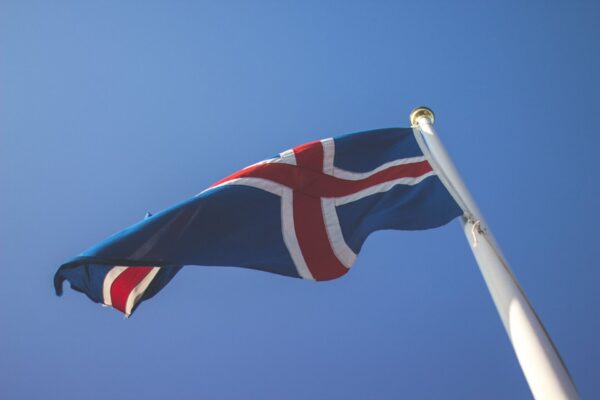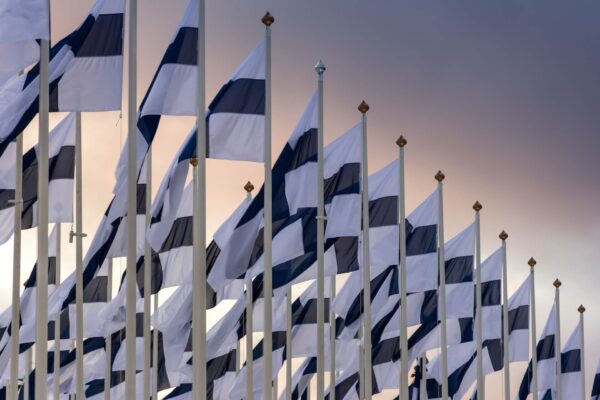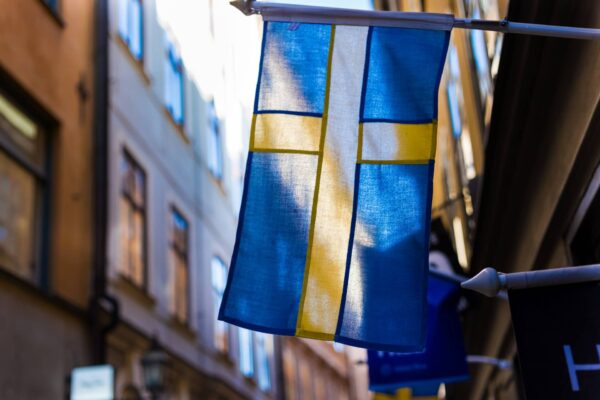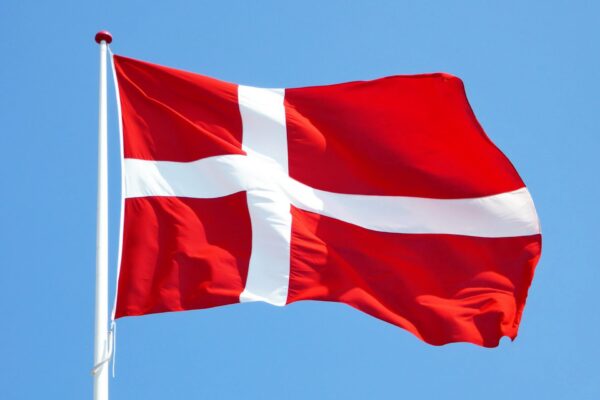Norway’s flag is characterised by the rich history of the Scandinavian country. It is not only the Philippus cross that links the Nordic flags together, the choice of colours is also linked to Norway’s historical relationship with its neighbours.
The design: what does the flag of Norway look like?
The Norwegian flag shows a blue St Philip’s cross with a white border on a red background, shifted towards the flagpole. The overall aspect ratio is 8:11 and the colour division must comply with the ratio 6:1:2:1:12.
Anchored in Norway’s history: this is what the flag of Norway means
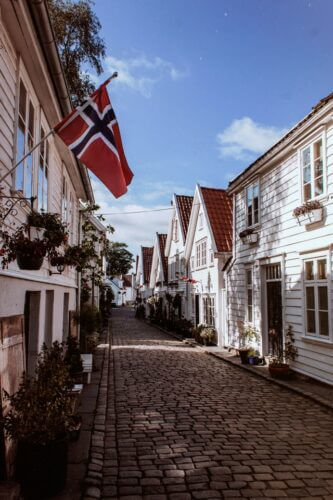
Both the colours and the motif of the Norwegian flag have historical significance.
However, unlike many other national flags, this can not only be traced back to the royal family, but is based much more on Nordic relations.
The Philippus cross connects the flag of Norway with most other Scandinavian flags, while the colours have a special meaning for the shared history with Denmark and Sweden.
In addition, the Norwegian flag has a very varied history compared to its neighbours, characterised by the use of many different versions.
The Scandinavian cross
The Scandinavian cross, also known as the Philippine cross on the right, unites all the national flags of Scandinavia. Although it actually has a Christian origin, today it symbolises the Nordic community of values. Its use in Scandinavian flags is based on the Dannebrog, the oldest Scandinavian flag.
The colours of the Norwegian flag
The red background is striking when looking at the Norwegian flag. Its origin lies in the flag of Denmark, the Dannebrog. The blue is based on Norway’s connection with Sweden and thus also with the Swedish flag in the 19th century. White also appeared in various historical versions, derived from the Danish flag.
Use of the Dannebrog in Norway
16th century - 1814: Use of the Dannebrog due to the union with Denmark
From the 16th century, Norway also used the Dannebrog, the flag of Denmark. This was retained until the personal union with Sweden came into being.
1814-1821: Danish flag with Norwegian coat of arms
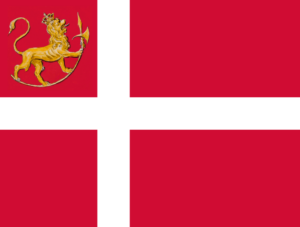
From 1814 to 1821 a Danish flag was used, which bore a Norwegian national coat of arms, a lion with a halberd, at the top of the mast.
The flag of Norway in the personal union with Sweden
From 1814: distinction between merchant and battle flags

In the personal union with Sweden, which came into being in 1814, Norway was allowed to fly its own merchant flag. However, a union flag had to be flown as a battle flag. From 1815, this was the Swedish flag with a white St Andrew’s cross in the upper square of the mast.
1821: Year of the flag confusion
Today, 1821 is known as the year of flag confusion. This is because pirate ships did not recognise the Dannebrog flag with the Norwegian coat of arms and captured such ships. As a result, different flags were authorised for certain waters, which were valid side by side.
The flag initiative of 1821
In 1821, there was an initiative to design a new flag in order to have a standardised flag again. The current flag, also known as the “pure tricolour“, was designed by Fredrik Meltzer, a Member of Parliament, and was approved for use in the North Sea in the same year.
1844: The Sillsallad

In 1844, King Oskar I ordered a new flag that combined the Norwegian and Swedish flags. This was intended to symbolise the equality of the two states. In Sweden, this flag was often referred to as the Sillsallad (herring salad), which provoked resistance in Norway.
1898: Establishment of the current flag as the national flag of Norway
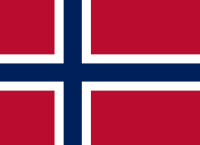
In 1898, in response to the “Sillsallad flag”, parliament adopted Fredrik Meltzer’s design of the tricolour as the national flag. This remained in place after the dissolution of the union with Sweden in 1905.
Norway and its flag: the history
The reason for the relationship with the Dannebrog is that Norway was united with Denmark as a province from the 16th to the beginning of the 19th century.
This was followed by an involuntary personal union with Sweden. During this time, the Norwegians were allowed to use their own merchant flag, but had to fly a union flag as a battle ensign. This consisted of a Swedish flag with a white St Andrew’s cross in the upper leech (left corner).
The Union flag, on the other hand, was a Dannebrog with a golden lion and a curved halberd in this position, as introduced by King Christian Frederik.
The year of flag confusion
However, these different flags led to a major problem: the well-organised pirates of the Mediterranean did not recognise the flag with the lion and attacked every ship that sailed under it. As a result, different flags were authorised for use at sea depending on the area.
This not only led to 1821 going down in history as the year of flag confusion in Norway, but also to an initiative to find a new, standardised flag. The flag as we know it today was chosen, designed by the Norwegian Member of Parliament Fredrik Meltzer.
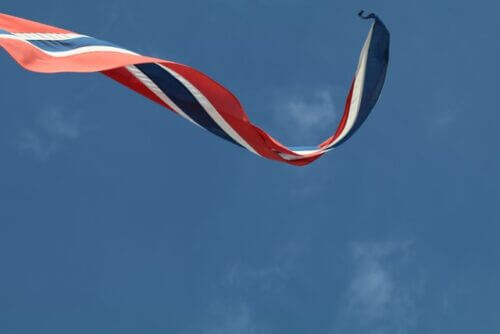
Norwegian flagging days
Flags may be flown all year round from 8 a.m. to 9 p.m., subject to certain rules. Many people use pennants instead. Flag flying is permitted on high Christian holidays, the birthdays of the royal family and Norwegian public holidays, such as National Day and the day of the dissolution of the union with Sweden.
| 01/01 | New Year’s |
| 29/01 | Birthday of Princess Ingrid Alexandra |
| 21/02 | Birthday of King Harald V |
| Sunday in March/April | Easter Sunday |
| 01/05 | Labour Day |
| 08/05 | Liberation Day |
| 17/05 | National Day |
| Sunday in May/June | Pentecost Sunday |
| 07/06 | Dissolution of the union with Sweden |
| 04/07 | Birthday of Queen Sonja |
| 20/07 | Birthday of Crown Prince Haakon |
| 29/07 | Olofsdagen |
| 19/08 | Birthday of Crown Princess Mette-Marit |
| 25/12 | First Christmas Day |
| Varying | Day of the Norwegian parliamentary election |
